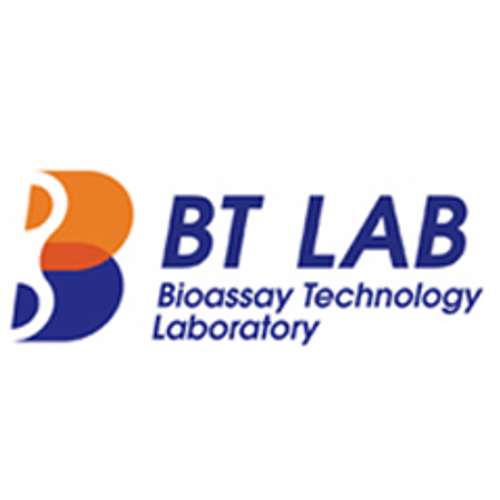Product Description
Human Pyrin domain-containing protein 1 (PYDC1) ELISA Kit | AE24919HU | Abebio
Species Reactivity: Human (Homo sapiens)
Abbreviation: PYDC1
Alternative Name: ASC2; POP1; PYC1; PAAD-only protein|pyrin domain containing 1|pyrin-domain containing protein 1|pyrin-only protein 1
Application: ELISA
Range: Request Information
Sensitivity: Request Information
Intra-Assay: ≤5.3%
Inter-Assay: ≤9.4%
Recovery: 1, 02
Sample Type: Serum, Plasma, Other biological fluids
Detection Method: Sandwich
Analysis Method : Quantitive
Test Principale: This assay employs a two-site sandwich ELISA to quantitate PYDC1 in samples. An antibody specific for PYDC1 has been pre-coated onto a microplate. Standards and samples are pipetted into the wells and anyPYDC1 present is bound by the immobilized antibody. After removing any unbound substances, a biotin-conjugated antibody specific for PYDC1 is added to the wells. After washing, Streptavidin conjugated Horseradish Peroxidase (HRP) is added to the wells. Following a wash to remove any unbound avidin-enzyme reagent, a substrate solution is added to the wells and color develops in proportion to the amount of PYDC1 bound in the initial step. The color development is stopped and the intensity of the color is measured.
Product Overview: ASC2, a PYD-only protein that functions as a modulator of multidomain PYD-containing proteins involved in NF-kappaB and caspase-1 activation. ASC2 adopts a six-helix bundle structure with a prominent loop, comprising 13 amino acid residues, between helices two and three. This loop represents a divergent feature of PYDs from other domains with the DD fold. Detailed analysis of backbone 15N NMR relaxation data using both the Lipari-Szabo model-free and reduced spectral density function formalisms revealed no evidence of contiguous stretches of polypeptide chain with dramatically increased internal motion, except at the extreme N and C termini. Some mobility in the fast, picosecond to nanosecond timescale, was seen in helix 3 and the preceding alpha2-alpha3 loop, in stark contrast to the complete disorder seen in the corresponding region of the NALP1 PYD.
Stability: The stability of ELISA kit is determined by the loss rate of activity. The loss rate of this kit is less than 5% within the expiration date under appropriate storage condition. The loss rate was determined by accelerated thermal degradation test. Keep the kit at 37°C for 4 and 7 days, and compare O.D.values of the kit kept at 37°C with that of at recommended temperature. (referring from China Biological Products Standard, which was calculated by the Arrhenius equation. For ELISA kit, 4 days storage at 37°C can be considered as 6 months at 2 - 8°C, which means 7 days at 37°C equaling 12 months at 2 - 8°C) .
 Euro
Euro
 USD
USD
 British Pound
British Pound
 NULL
NULL












